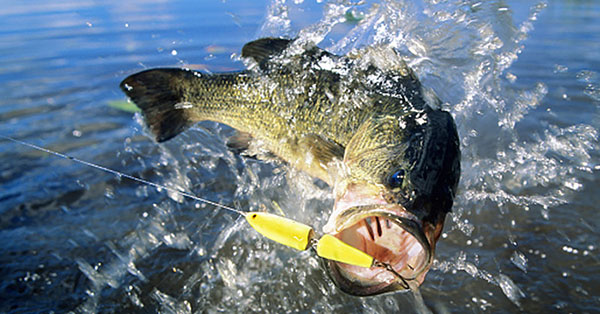Topwater bass fishing is a thrilling technique that often results in explosive strikes. Here are some effective tactics to enhance your success when fishing with topwater lures:
1. Early Morning and Late Evening:
- Bass are more likely to strike topwater lures during low light conditions. Early in the morning and late in the evening are prime times for topwater action. Cloudy days can also extend the topwater bite.
2. Calm Water:
- Topwater lures are most effective in calm or slightly rippled water. The surface disturbance caused by the lure can be more noticeable to bass when the water is relatively still.
3. Use Walking Baits:
- Walking baits, such as Zara Spooks or Sammy-style lures, are excellent choices. The side-to-side action mimics a wounded or struggling baitfish, triggering aggressive strikes.
4. Popper Lures:
- Poppers create a splashing and popping action on the surface. Cast near cover or structure, and then use a twitch-pause retrieve. The pause allows bass to locate the bait and strike during the moment of vulnerability.
5. Buzzbaits:
- Buzzbaits work well in low-light conditions and over shallow cover. Retrieve them quickly, creating a surface disturbance that attracts bass. A steady retrieve or a stop-and-go technique can be effective.
6. Frogs in Vegetation:
- Hollow-body frogs excel in heavy vegetation. Cast them onto lily pads, grass mats, or other surface cover, and retrieve with a steady, popping, or walking motion. Be ready for explosive strikes!
7. Jitterbugs and Prop Baits:
- Jitterbugs and prop baits create a gurgling or chugging sound that can be irresistible to bass. These lures work well in calm conditions, and the noise and vibration can attract fish from a distance.
8. Target Structure and Cover:
- Cast near structures like docks, fallen trees, rocks, and other cover. Bass often hide in or near these areas, ready to ambush prey. Work your topwater lure around and over these structures.
9. Match the Hatch:
- Pay attention to the prevalent forage in the area. Choose a topwater lure that closely resembles the size and color of the natural prey.
10. Experiment with Retrieval Speed:
- Vary your retrieval speed to figure out the bass’s preference on that particular day. Sometimes a slow, subtle approach works best, while at other times, a fast and aggressive retrieve triggers strikes.
11. Modify Lures:
- Modify your topwater lures if necessary. Sometimes changing the hooks or adding rattles can make a difference in attracting bass.
12. Stay Patient:
- Don’t be too quick to pick up and recast. Let the ripples from your cast dissipate, and occasionally let the lure sit still to imitate a vulnerable target.
13. Watch for Strikes:
- Keep a close eye on your lure, as strikes can be explosive and happen in the blink of an eye. Be ready to set the hook when you see or feel any unusual movement.
14. Adjust for Water Temperature:
- In warmer water, bass may be more aggressive, so you can use faster retrieves. In cooler water, a slower presentation may be necessary to entice strikes.
15. Experiment with Colors:
- If the water is clear, use natural colors. In stained or murky water, consider using brighter or more contrasting colors to improve visibility.
Remember that successful topwater bass fishing often involves experimentation. Be adaptable and willing to try different lures, techniques, and retrieval speeds until you find what works on a given day. Pay attention to the conditions, and be prepared to adjust your approach accordingly.

